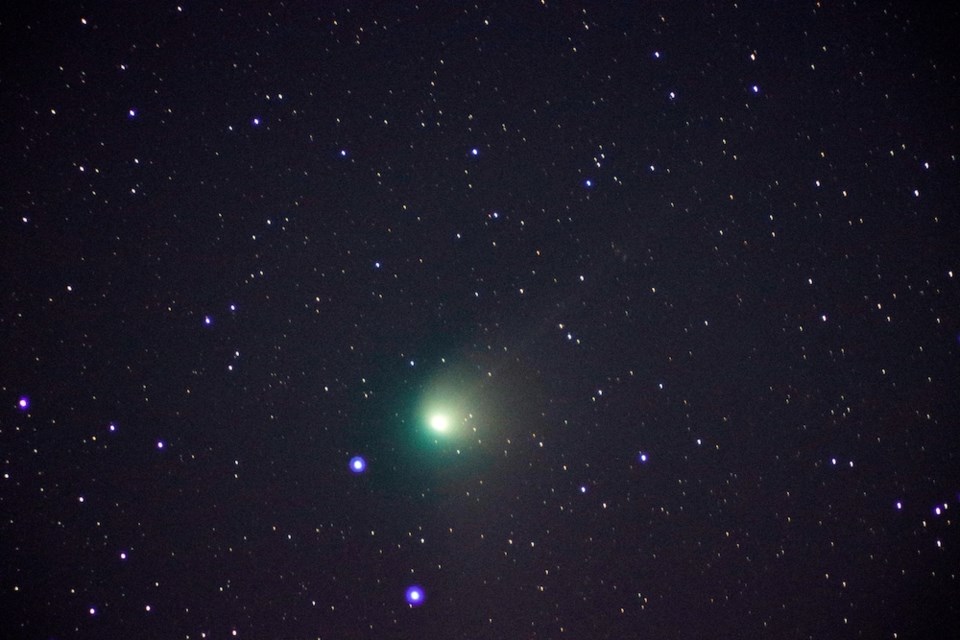Photographers on the Sunshine Coast took advantage of clear skies Jan. 29 to capture some images of the latest comet in our skies.
Our astronomy columnist, Richard Corbet, tells us that Comet C/2022 E3 ZTF – discovered in March 2022 – is much smaller than the spectacular Neowise in 2020. "Its maximum size, including the too-faint-to-see tail is less than a degree – about a fingernail width at arm's length."
Naked-eye observers may be disappointed by the considerably dimmer ZTF, which has a green glow, but binoculars can help augment the experience.
Why doesn't it look like the pictures?
Even with binocs, though, the comet won't appear to observers as it does in these photos.
"Any camera that can capture this comet does so by taking a time exposure – accumulating an image over many seconds then saving the total," explains Corbet. "The human eye, in contrast, works like a movie camera; the eye-brain combination refreshes its 'picture' many times per second, effectively taking many short-duration exposures. None of these short exposures can capture the faint bits that a time exposure camera can. While this is disappointing when trying to view sky objects, it does offer a benefit by allowing us to see and anticipate things in motion. This was clearly an advantage to our ancestors who evolved as both predator and prey on the African plains; it’s equally essential while trying to drive in Vancouver traffic so, on-balance, pretty much a plus."
"This comet and many other objects will never look as good as the pictures in coffee table books on astronomy," says Corbet. "Those involve technology and precision work far beyond the capabilities of the basic Mark I eyeball. What we can do with very limited aid is watch an object that is billions of years old swoop through our little volume of solar system for its first pass in at least 50,000 years."
Contemplating insignificance
Comet ZTF may have never been this close before and may never be again, says Corbet. "It comes from so far out that minute interactions out there could send it away from the solar system into interstellar space.
"It’s like seeing the Andromeda Galaxy – it’s faintly visible to the naked eye. That faint smudge we see is another galaxy, slightly bigger than our own. The photons entering our eyes and stimulating our retinas have been travelling through space for two million years. They left before homo sapiens evolved.
"With binocs and a bit of effort, you can see other galaxies near the star Spica in Andromeda. One of them is much bigger than our own and about 80 million light years away. You can see it via photons that left that galaxy at a time when the dominant life forms on this planet were dinosaurs.
"I find all of these activities very helpful in remembering our importance to the universe."
Still visible
For those who want to try their hand at finding the comet, it is still visible, says Corbet, "appalling cloud cover notwithstanding." BBC's Sky at Night Magazine has a chart that shows the comet's path in February and March. On Feb. 1, it should be at its closest to Earth: "about 0.284 AU away or about 26 million miles away." That's about a quarter of the distance between us and the sun. ZTF should pass very close to Mars on Feb. 11 or thereabouts, says Corbet.
The February Sunshine Coast Astronomy Club meeting is open to the public will be at the Sechelt Library at 7 p.m. Feb. 10. The presentation will be from Bruce Woodburn about the James Webb Telescope. Details will be available on the club's website.



